The Monterozzi Necropolis, on the eponymous hill near Tarquinia, spans a vast plateau of over 100 hectares and contains around 6,000 tombs carved into tuff. Approximately 200 are painted, with the oldest dating to the 7th century BC, and the rest spanning up to the 1st century BC.
About fifty tombs are open to visitors. Along with the Cerveteri Necropolis, the site is inscribed on the UNESCO World Heritage List (since 2004), offering the largest collection of preserved Etruscan wall paintings.
Why visit the Tarquinia Necropolis
- See one of the most significant ensembles of funerary painting in the Mediterranean world.
- Understand the Etruscan vision of the afterlife, blending joy, rituals, and mythology.
- Explore monumental tombs carved into rock with elaborate decoration.
- Gain a unique interpretative key to pre-Roman Italy.
Painted Etruscan Tombs
The painted tombs represent about 3 % of the total and are often accompanied by monumental tumuli—markers of aristocratic luxury. Their architecture is characteristic, with a funerary chamber carved in rock, accessed via a stair-well corridor.
The frescoes depict banquets, dances, musicians, hunting, games, and processions, in vivid colors—with smiling figures, animals, and landscapes. They express an afterlife focused on the celebration of life and a comforting, familiar world for the deceased.
Beyond aesthetics, these painted cycles are a major source for understanding funeral rites, religious beliefs, and the values of an Etruscan society that was largely pre-Roman and sparsely documented in texts. The Monterozzi Necropolis thus offers an exceptional panorama of funerary ideology: pictorial art prolongs the memory of the deceased and illuminates cultural anthropologies of the past.
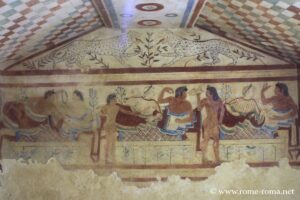
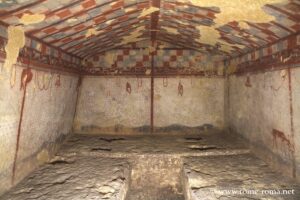
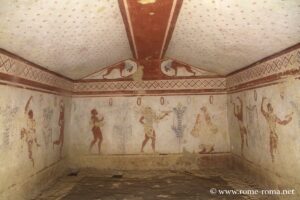
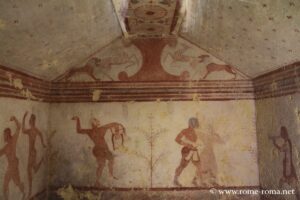
Some Major Tombs
- Tomb of the Leopards: pediment with two symmetrical leopards; funerary banquet with guests, dancers, musicians, and finely detailed clothing.
- Tomb of the Lionesses: checkered ceiling, painted Doric columns, very colorful palette and Ionian influence; scene with a dancer and musicians.
- Tomb of Hunting and Fishing: two rooms; ritual dance of Dionysian inspiration and scenes of hunting and fishing.
- Tomb of the Triclinium (≈ 470 BC): refined banquet cycle (triclinium), frescoes transferred to the museum for preservation.
- Tomb of the Orcus (tomba dell’Orco): two chambers; visions of the afterlife with the goddess Velia and mythological figures such as Charun and Hypnos.
Photo gallery of the tombs
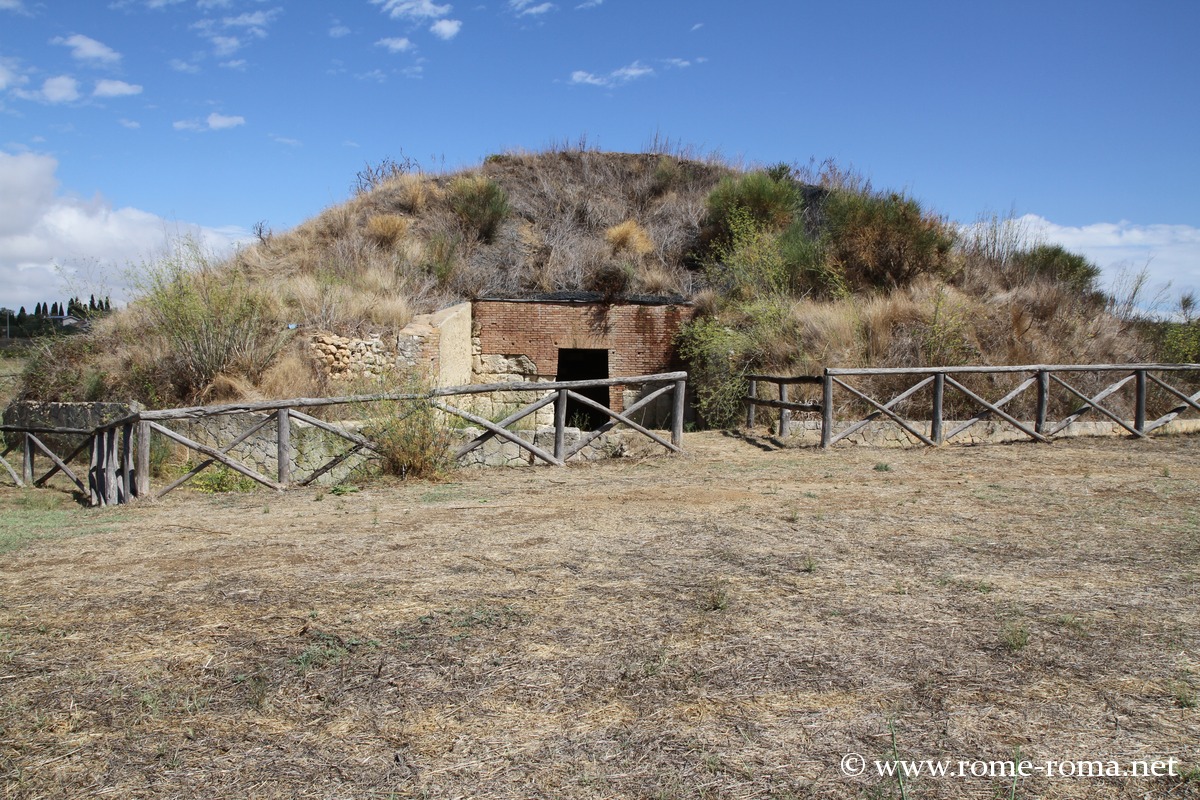
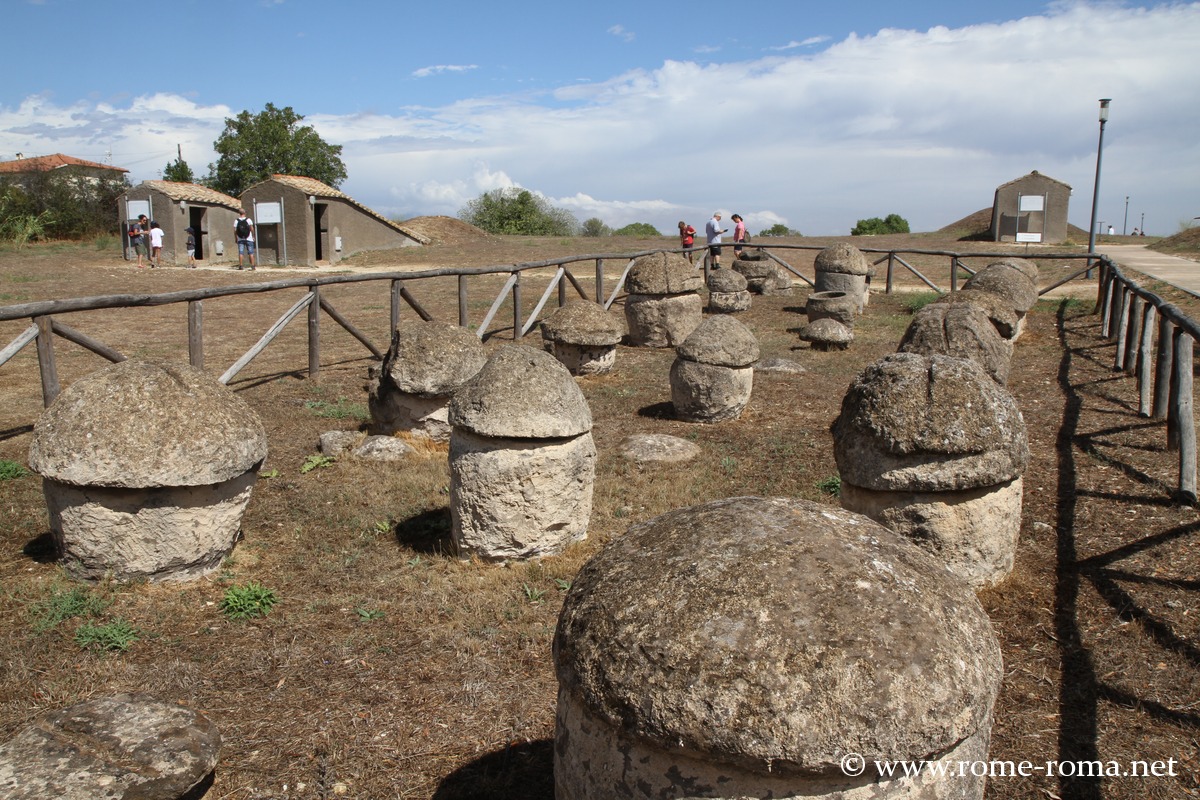
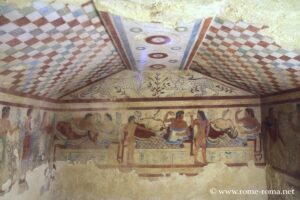
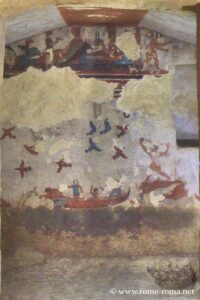
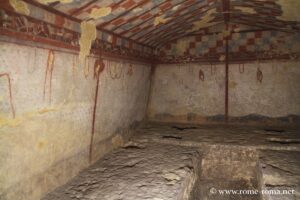
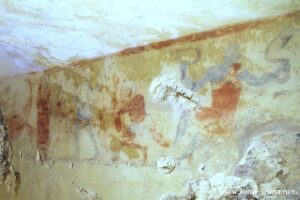


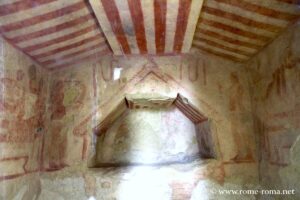
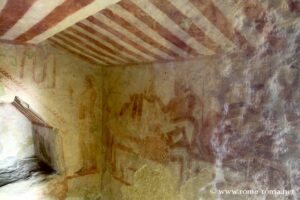
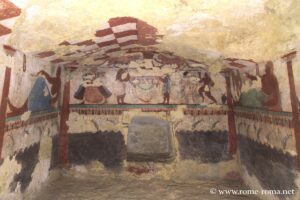

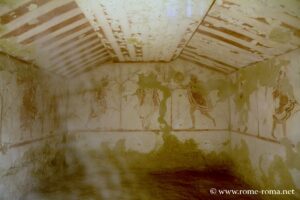
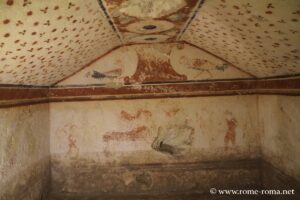



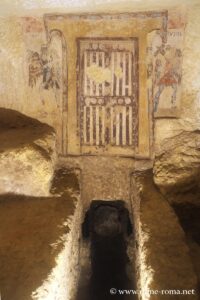
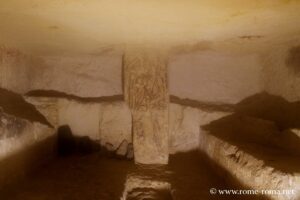
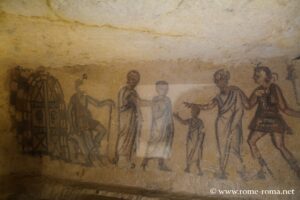
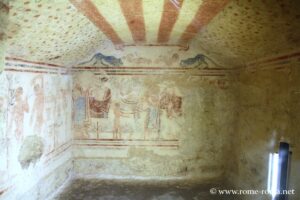
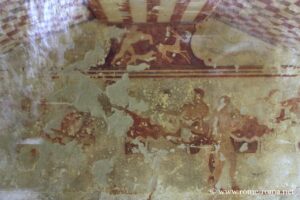
Map and address
Address : Via Ripagretta, 01016 Tarquinia VT, ItalieIf you see this after your page is loaded completely, leafletJS files are missing.
Informations

Tomba dei Leopardi
Tarquinia in brief
Tarquinia was founded in the 12th century BC. This Etruscan city dominated the entire Maritime Etruria in the 6th century BC.
The two major Etruscan necropolises of Tarquinia and Cerveteri reflect funerary practices from the 9th to the 1st century BC, and rank among the most beautiful testimonies of Etruscan civilization.
The medieval village of Tarquinia, located atop a hill, deserves a visit, as does its archaeological museum.
Visit the necropolis of Monterozzi
| Necropolis of Monterozzi Address: Strada provinciale Monterozzi Marina, 01016 Tarquinia |
Opening hours and visits
|
Links and information
|
Visit the Archaeological Museum of Tarquinia
| National Archaeological Museum of Tarquinia Piazza Cavour 1, 01016 Tarquinia (VT) |
| Opening hours and fees – From Tuesday to Sunday from 8:30 am to 7:30 pm; ticket office closes at 6:30 pm – Fees: see above the information on the necropolis |
| Links and information – Cultural Service of Lazio: https://pact.cultura.gov.it/ and City of Tarquinia |



